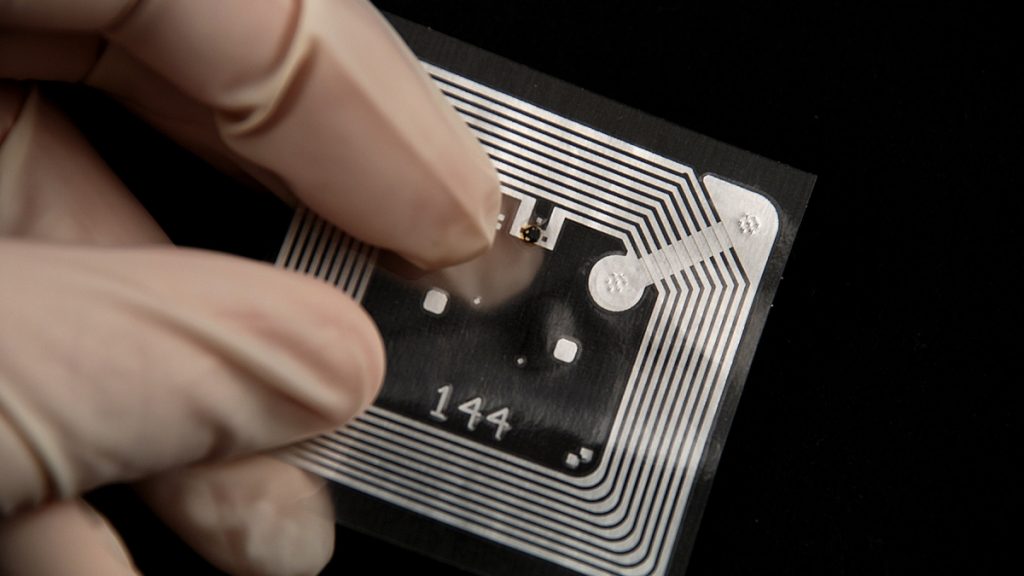RFID technology has significantly transformed various industries by improving tracking, inventory management, and efficiency. RFID scanners have evolved from humble beginnings to become indispensable tools in retail, logistics, healthcare, and beyond. Let’s dive into 15 fascinating facts about the evolution of RFID scanners and how they’ve shaped modern technology.
1. Origins in World War II
Contents
- 1. Origins in World War II
- 2. First RFID Patent
- 3. Early Commercial Use
- 4. Development of Passive and Active RFID
- 5. Advancements in Memory Capacity
- 6. Miniaturization of RFID Tags
- 7. RFID in Retail
- 8. Use in Animal Tracking
- 9. Healthcare Applications
- 10. Integration with IoT
- 11. Enhanced Security Features
- 12. Environmental Impact
- 13. Wide Range of Frequencies
- 14. Evolution of RFID Scanners
- 15. Future Prospects
The origins of RFID technology can be traced back to World War II. The British initially used the technology to identify friendly aircraft. This early form of RFID was known as the IFF (Identification Friend or Foe) system.
2. First RFID Patent
The first patent for RFID technology was granted in 1973. Mario Cardullo received the patent for a passive RFID tag with memory. This marked the beginning of modern RFID technology.
3. Early Commercial Use
The first commercial use of RFID scanners was in the 1980s. They were used to track and manage railroad cars in the transportation industry. This early adoption showcased the potential of RFID in logistics and asset tracking.
4. Development of Passive and Active RFID
RFID tags come in two primary types: passive and active. Passive RFID tags lack a power source and depend on the RFID scanner’s signal for activation. In contrast, active RFID tags have their own power source, enabling a longer range and greater data storage capacity.
5. Advancements in Memory Capacity
Early RFID tags had very limited memory capacity. Over the years, technological advancements have allowed for significant increases in memory, enabling RFID tags to store more data and provide more detailed information.
6. Miniaturization of RFID Tags
Initially, RFID tags were relatively large and bulky. However, ongoing advancements have led to the miniaturization of RFID tags. Today, RFID tags can be as small as a grain of rice, making them suitable for various applications.
7. RFID in Retail
The retail industry has been one of the biggest adopters of RFID scanners. Walmart’s decision to implement RFID technology in its supply chain in the early 2000s was a game-changer. It demonstrated how RFID could improve inventory management and reduce costs.
8. Use in Animal Tracking
RFID technology is widely used in animal tracking. Pets, livestock, and wildlife are often tagged with RFID chips to monitor their movements, health, and behavior. This application has significantly improved animal management practices.
9. Healthcare Applications
RFID scanners are used extensively in healthcare. They help track medical equipment, manage patient records, and ensure the correct administration of medication. This use of RFID technology has improved patient safety and operational efficiency.
10. Integration with IoT
The integration of RFID with the Internet of Things (IoT) has opened up new possibilities. RFID tags and scanners can now communicate with IoT devices, enabling more sophisticated tracking and data collection.
11. Enhanced Security Features
Security has always been a concern with RFID technology. Over the years, enhanced security features such as encryption and authentication have been developed to protect the data stored on RFID tags and prevent unauthorized access.
12. Environmental Impact
RFID technology has contributed to more sustainable practices. For instance, RFID tags help manage inventory, reduce waste, and improve recycling processes. This positive environmental impact is a significant advantage of RFID technology.
13. Wide Range of Frequencies
RFID systems function across various frequencies, such as low frequency (LF), high frequency (HF), and ultra-high frequency (UHF). Each frequency offers unique advantages and is tailored for specific applications, making RFID technology highly versatile.
14. Evolution of RFID Scanners
RFID scanners have evolved from bulky and expensive devices to compact and affordable ones. Modern RFID scanners are more powerful, can read multiple tags simultaneously, and can be integrated with mobile devices for greater convenience.
15. Future Prospects
The future of RFID technology looks promising. With continuous technological advancements, RFID scanners are becoming more efficient, affordable, and versatile. The integration with emerging technologies such as blockchain and artificial intelligence will further enhance the capabilities and applications of RFID.
Conclusion
The journey of RFID scanners from their origins in World War II to their current applications is a testament to the power of innovation. These fascinating facts highlight the significant milestones in the evolution of RFID technology and its impact across various sectors. As RFID technology advances, its potential to revolutionize operations and improve efficiency in countless ways remains vast.
Explore the comprehensive solutions offered by industry experts to gain a deeper understanding of how RFID technology can benefit your business. Check out their services here to stay ahead of the curve and leverage the latest advancements in RFID technology.

